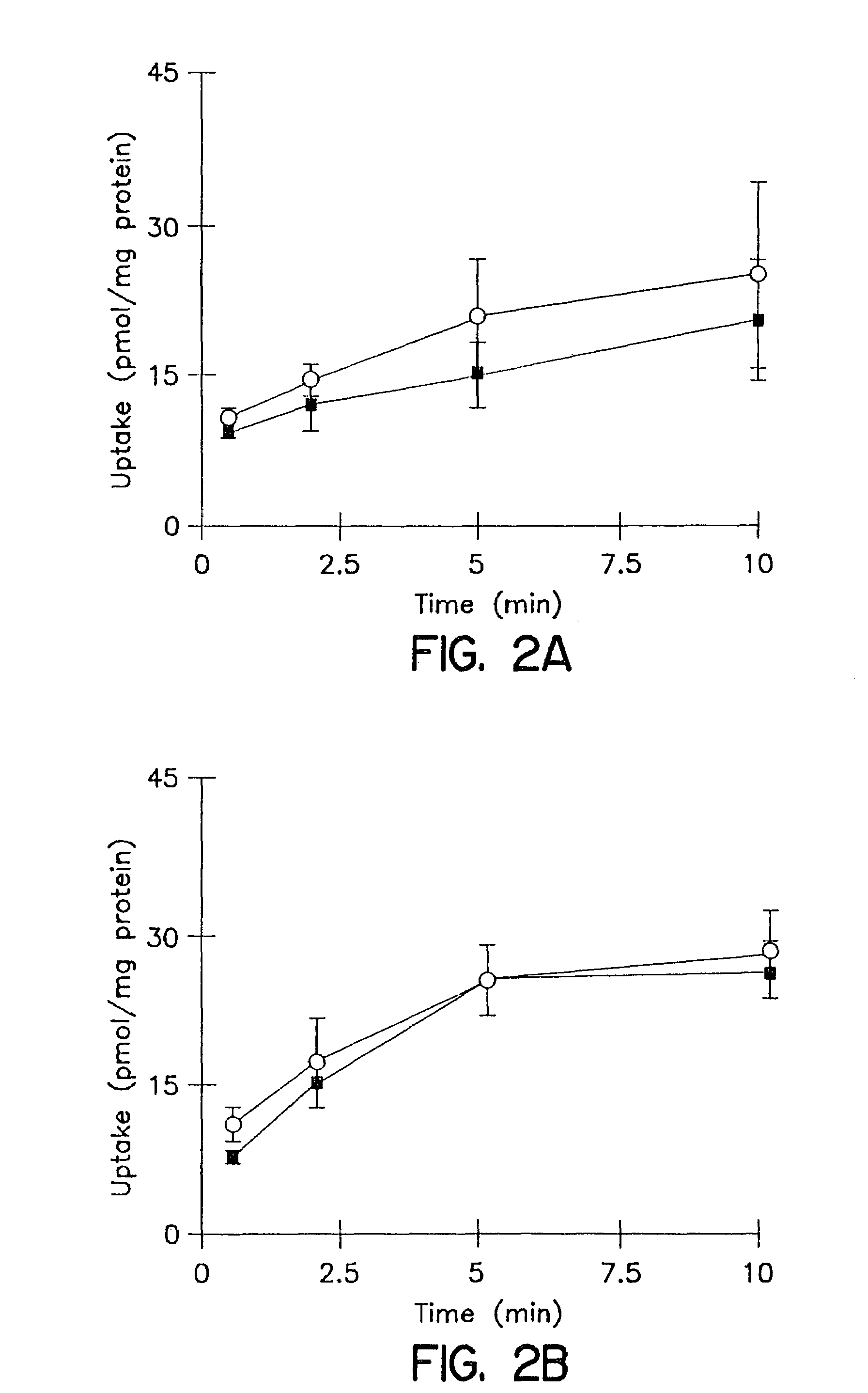Method of screening candidate compounds for susceptibility to biliary excretion by endogenous transport systems
a technology of endogenous transport and susceptibility to biliary excretion, which is applied in the field of screening compounds, can solve the problems of large amounts of drugs that may never be seen by the systemic circulation or drug effect site, formation of high plasma concentrations of unwanted metabolites, and often undetected removal of therapeutic compositions from the circulatory system of animals, etc., and achieves the effect of facilitating the screening of many candidate compounds
- Summary
- Abstract
- Description
- Claims
- Application Information
AI Technical Summary
Benefits of technology
Problems solved by technology
Method used
Image
Examples
embodiment
Side-by-Side Embodiment
[0081]In accordance with one embodiment of the present invention, replicate hepatocyte cultures are established, preferably in sandwich configuration. A first culture is exposed to a standard buffer and a second culture is exposed to a Ca++-free buffer. Exposure to the Ca++-free buffer disrupts the bile canaliculi within the hepatocyte monolayers by breaking down adhesional processes or junctional complexes in the monolayer of hepatocytes. While exposure to the Ca++-free buffer is a preferred method of breaking down the adhesional processes or junctional complexes to substantially disrupt the bile canaliculi, any suitable technique for breaking down the adhesional processes or junctional complexes to promote substantial disruption of the bile canaliculi as would be apparent to one of ordinary skill in the art is contemplated to be within the scope of the present invention. Exemplary techniques include, but are not limited to, the administration to the culture ...
example 1
Cumulative Uptake in Cultured Hepatocytes
[0127]The cumulative uptake of inulin was negligible (less than 0.01% of initial added substrate) at all incubation times in either short-term or long-term cultured hepatocytes (FIGS. 1A and 1B). In the 3-hr cultured hepatocytes, the cumulative uptake of salicylate, methotrexate and [D-pen2,5]enkephalin was not significantly different in standard buffer and in Ca2+-free buffer (FIGS. 2A, 3A, and 4A; p>0.05). However, slightly higher cumulative uptake of taurocholate in standard buffer compared to Ca2+-free buffer was observed (FIG. 5A); at 10 min, the cumulative uptake in standard buffer was approximately 10% higher than in Ca2+-free buffer (p=0.0352). In 96-hr cultured hepatocytes, extracellular Ca2+ had no effect on the cumulative uptake of salicylate (FIG. 2B, p>0.05). However, the uptake of methotrexate, [D-pen2,5]enkephalin, and taurocholate in long-term cultured hepatocytes in standard buffer was significantly higher than in Ca2+-free b...
example 2
Relationship Between the Percentage of Dose Excreted in Bile in Rats and Biliary Excretion Index in Cultured Hepatocytes
[0128]The five model substrates representing a diverse spectrum of biliary excretion properties were selected to examine the relationship between the percentage of the dose excreted in bile in vivo in rats and the Biliary Excretion Index in sandwich-cultured hepatocytes. Information regarding the percentage of the dose excreted in rat bile after i.v. administration was obtained from the literature. The extent of inulin and salicylate secretion into bile was negligible (Eriksson et al., Acta. Physiol. Scand. 95:1-5,1975; Laznicekand et al., Eur. J. Drug Met. Pharmacokinet. 19:21-26, 1994). Approximately 50-60% of a 22 μmol / kg methotrexate dose (Bremnes et al., Cancer Res. 49:2460-2464,1989; Masuda et al., Cancer Res. 57:3506-10,1997) and 70% of a 14.5 μmol / kg [D-pen2,5]enkephalin dose (Chen et al., Pharm. Res. 14:345-350, 1997) were excreted into rat bile as unchang...
PUM
| Property | Measurement | Unit |
|---|---|---|
| pH | aaaaa | aaaaa |
| pH | aaaaa | aaaaa |
| concentration | aaaaa | aaaaa |
Abstract
Description
Claims
Application Information
 Login to View More
Login to View More - R&D
- Intellectual Property
- Life Sciences
- Materials
- Tech Scout
- Unparalleled Data Quality
- Higher Quality Content
- 60% Fewer Hallucinations
Browse by: Latest US Patents, China's latest patents, Technical Efficacy Thesaurus, Application Domain, Technology Topic, Popular Technical Reports.
© 2025 PatSnap. All rights reserved.Legal|Privacy policy|Modern Slavery Act Transparency Statement|Sitemap|About US| Contact US: help@patsnap.com



